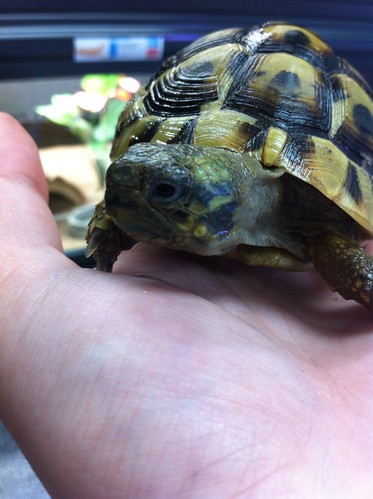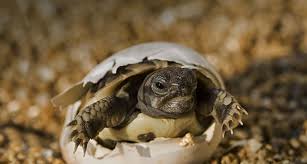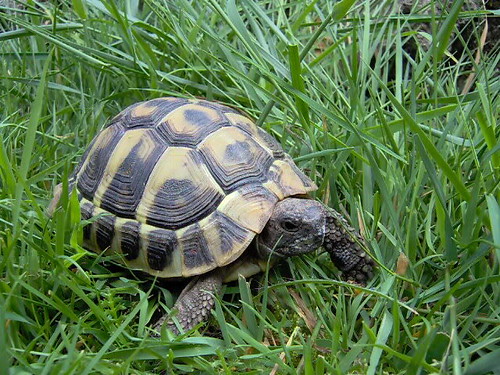Hermann's tortoises or testudo hermanni are from southern areas of Europe. They are small to medium sized, growing to around 8-10 inches and are yellow and black. Their limbs and tail are grey and they have beaks rather than teeth. As a species they are 'living fossils' and come from the age of reptiles. Each tortoise has the potential to live over 80 years so they really are a long term commitment.
In terms of housing, tortoises do like to live outside if the weather is right, but as we live in the UK they are best kept on a tortoise table or purpose built enclosure, not a vivarium. They like to live in micro climate environments and generally prefer temperatures of 25-26C for their cooler spots and 32-33C for their warm areas. They really love to be in the sun, which is why a heat lamp rather than a heat mat is the best source of heat, and have plenty of space to roam around in the fresh air. They also need UV-B light to help them to properly use the calcium and vitamin D3 they intake. Hermann's tortoises will want to go into hibernation whatever
environment they live in. They need a safe, secure place with
temperatures between 4-10C, some suggest keeping them in a fridge used daily to ensure correct temperature and regular airflow. Tortoises also enjoy digging, burrowing and climbing so a deep substrate such as sand and dirt is essential. It's also good practice to provide them with a large water dish so that they can bathe as well as drink. Contrary to some advice, tortoises DO need drinking water everyday. They don't get all the moisture they need from their diet alone.
Diet-wise they are herbivores and should not be given any meat as they are incapable of digesting that much protein. They need a diet high in fresh vegetation, calcium and low in phosphorous and protein. Calcium can be provided by adding powder to their food and by giving them cuttlebones which also help to keep their beaks trim. If they are not given the correct diet they can suffer from soft shell and pyramiding, both of which can lead to severe deformities. Generally a good diet will consist of kale, watercress, spring greens, leafy salad, dandelions, chicory, honeysuckle, sow thistle,
white clover, heartease, mallow, mulberry and hibiscus flowers, carrot, parsnip, peppers, coriander, parsley and small amounts of non-citric fruits such as strawberries. Small amounts of dried food such as herb cobs can be fed but are not generally recommended.
When buying a tortoise it's really important to ensure that you are given the correct certificates to ensure that he/she was bred in the UK as importation of tortoises from other countries is illegal.
Fascinating Fact: The shell of the tortoise is made up on 60 bones and they're all connected to each other!
Further Reading:
Tortoise Trust
Northampton Reptile Center
Simply Tortoise




No comments:
Post a Comment